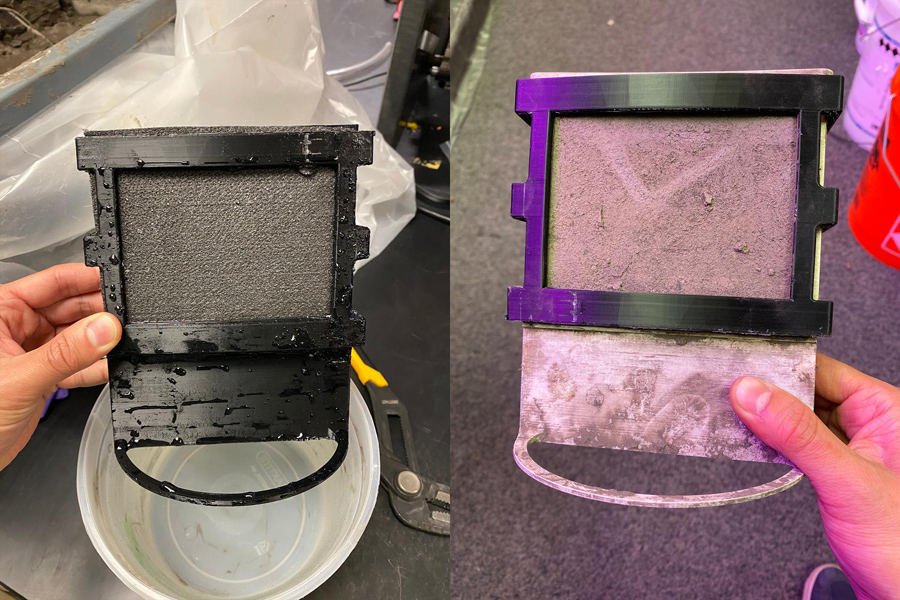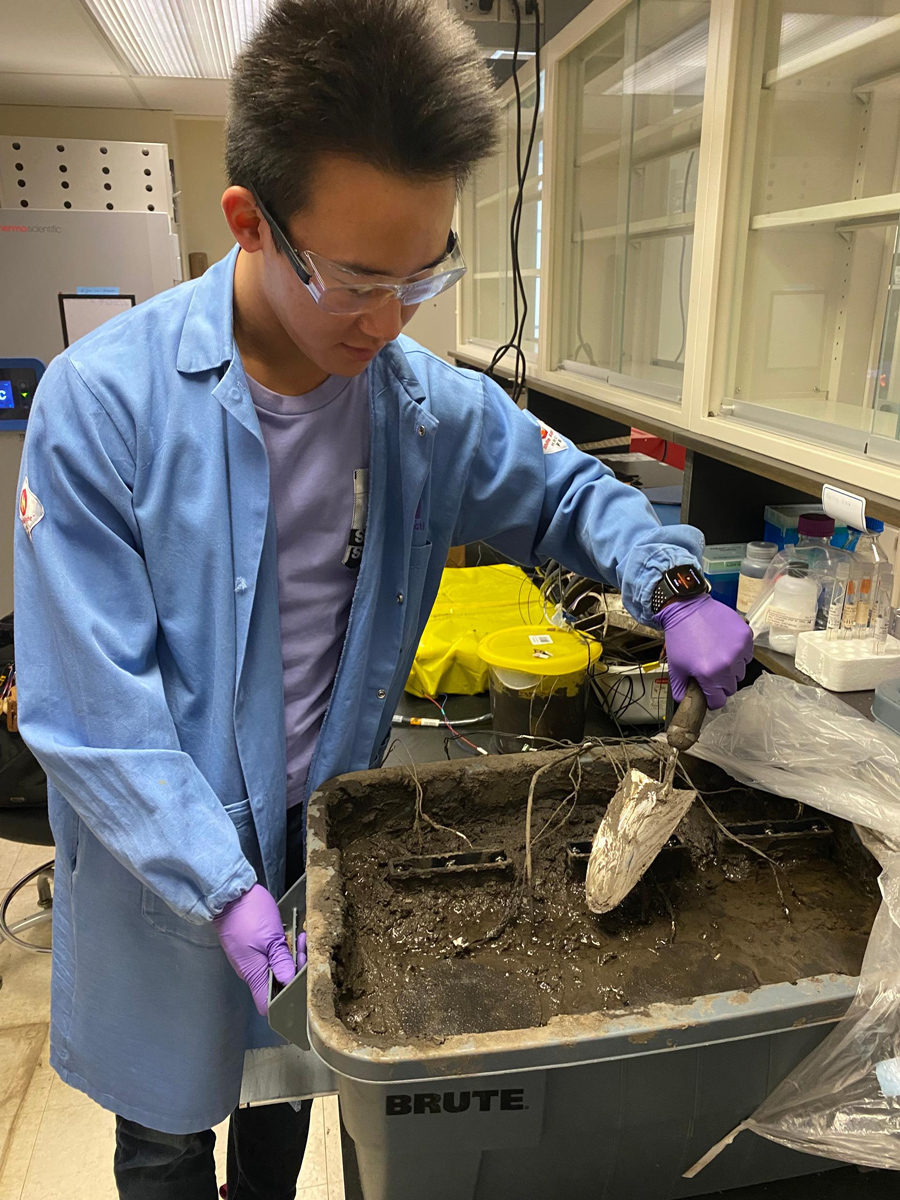Send this article to a friend:
January
16
2024
Send this article to a friend: January |
| "Dirt-powered fuel cell" draws near-limitless energy from soil
Microbial fuel cells, as they're called, have been around for more than 100 years. They work a little like a battery, with an anode, cathode and electrolyte – but rather than drawing electricity from chemical sources, they work with bacteria that naturally donate electrons to nearby conductors as they chow down on soil. The issue thus far has been keeping them supplied with water and oxygen, while being buried in the dirt. “Although MFCs have existed as a concept for more than a century, their unreliable performance and low output power have stymied efforts to make practical use of them, especially in low-moisture conditions," said UNW alumnus and project lead Bill Yen.  The design places a disc-shaped anode at the bottom, and a vertically-oriented anode poking up towards the surface
Bill Yen/Northwestern University
So, the team set about creating several new designs targeted at giving the cells continual access to oxygen and water – and found success with a design shaped like a cartridge sitting vertically on a horizontal disc. The disc-shaped carbon felt anode lies horizontally at the bottom of the device, buried deep in the soil where it can capture electrons as microbes digest dirt. The conductive metal cathode, meanwhile, sits vertically on top of the anode. The bottom part thus sits deep enough to have access to moisture from the deep soil, while the top sits flush with the surface. A fresh air gap runs down the whole length of the electrode, and a protective cap on top stops dirt and debris from falling in and cutting off the cathode's access to oxygen. Part of the cathode is also coated with a waterproofing material, so that when it floods, there's still a hydrophobic section of the cathode in touch with oxygen to keep the fuel cell running. In testing, this design performed consistently across different soil moisture levels, from completely underwater to "somewhat dry," with just 41% water by volume in the soil. On average, it generated some 68 times more power than was required to operate its onboard moisture and touch detection systems, and transmit data via a tiny antenna to a nearby base station.  Clean and dirty microbial fuel cells, with the disc-shaped anode at the bottom removed
Bill Yen/Northwestern University
As with other super-long term power generation sources, like betavoltaic diamond batteries made using nuclear waste, the amount of power generated here isn't large enough to go and run a dirt-powered car or smartphone. It's more about powering small sensors that can run over the long term without needing regular battery changes. "If we imagine a future with trillions of these devices, we cannot build every one of them out of lithium, heavy metals and toxins that are dangerous to the environment," said Yen. "We need to find alternatives that can provide low amounts of energy to power a decentralized network of devices. In a search for solutions, we looked to soil microbial fuel cells, which use special microbes to break down soil and use that low amount of energy to power sensors. As long as there is organic carbon in the soil for the microbes to break down, the fuel cell can potentially last forever." Thus, sensors like these could be very handy to farmers looking to monitor various soil elements – moisture, nutrients, contaminants, etc – and apply a tech-driven precision agriculture approach. Pop a few dozen of these things around your property, and they should be good to generate data for years, possibly even decades to come.  Microbial fuel cells in lab-based soil testing
Bill Yen/Northwestern University
Perhaps the neatest part here is that all components of this design, according to the research team, can be bought off the shelf at a hardware store. So there's no supply chain or materials issues standing between this research and widespread commercialization. The research was published in the journal Proceedings of the ACM on Interactive, Mobile, Wearable and Ubiquitous Technologies Source: Northwestern University
|
Send this article to a friend:
 |
 |
 |